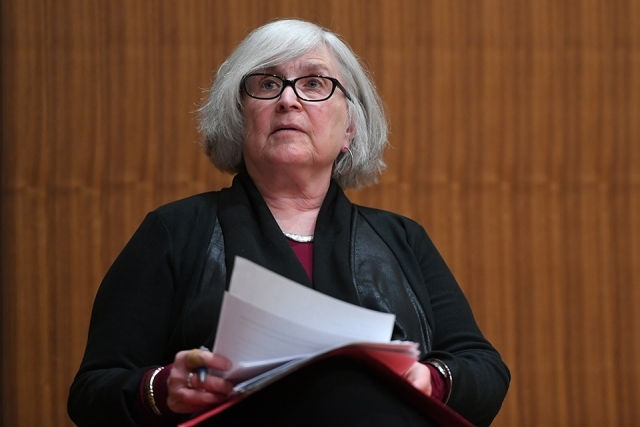
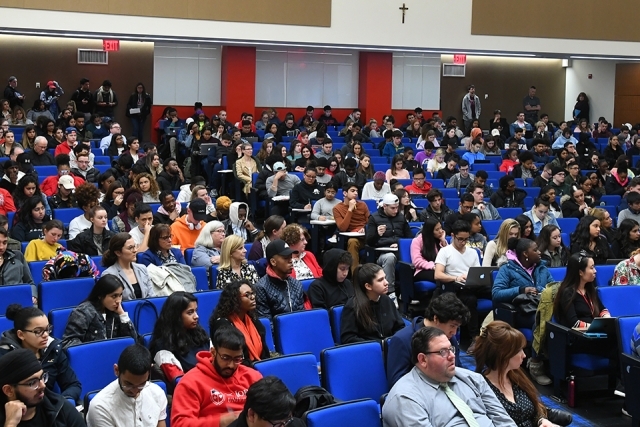
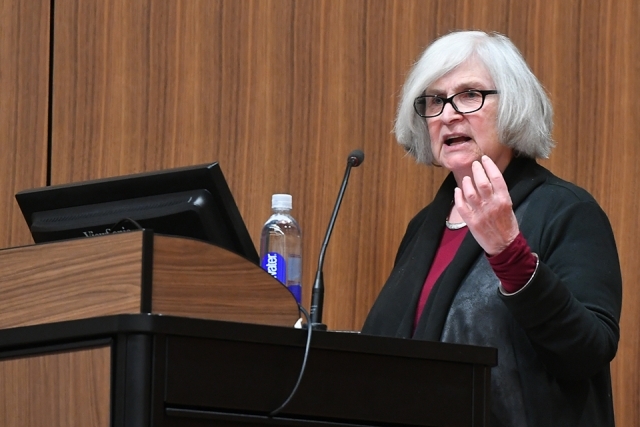
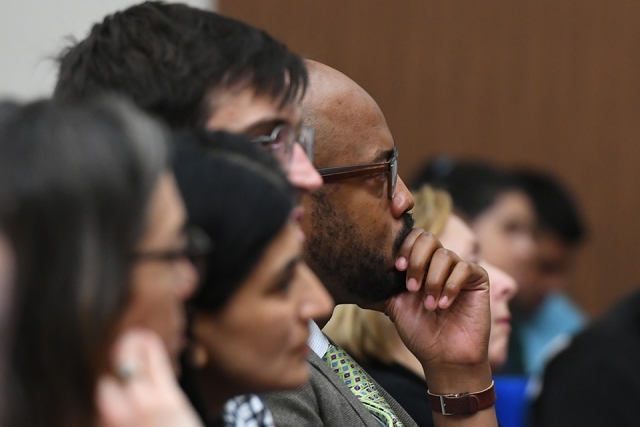
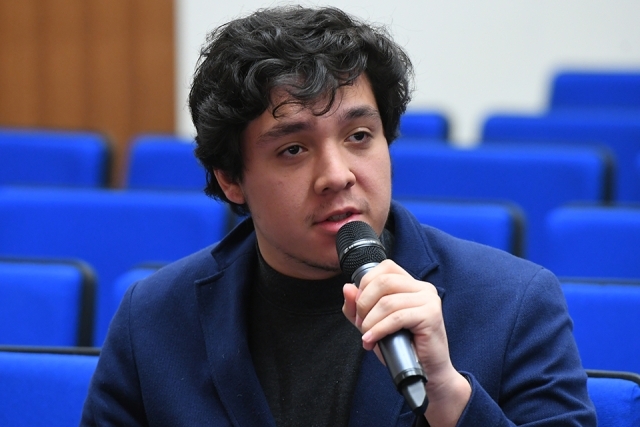
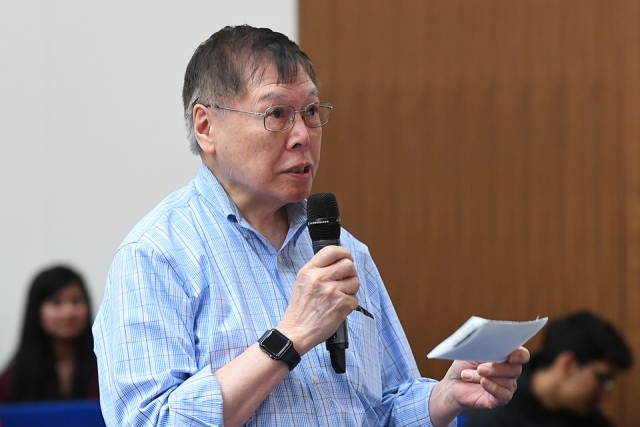
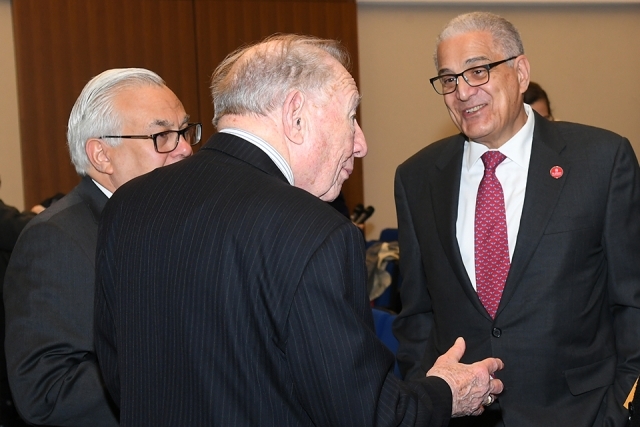
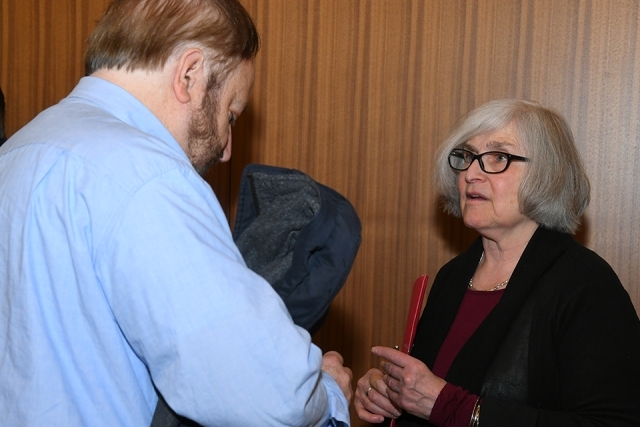
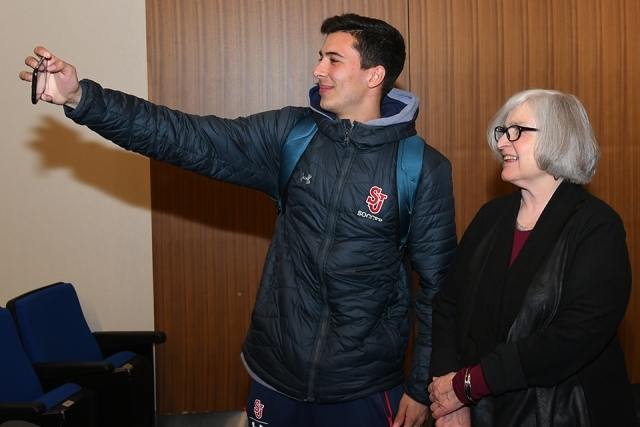
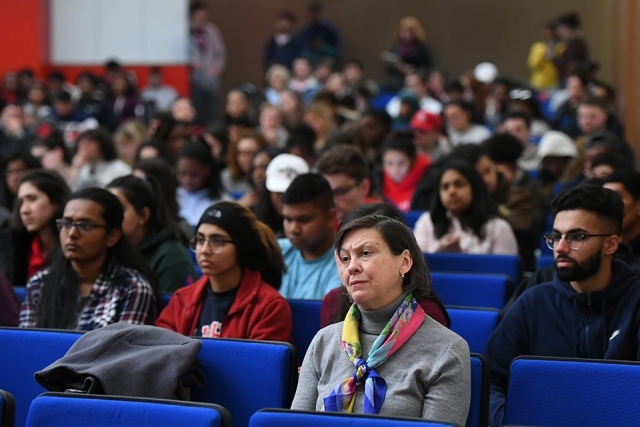










Catholic immigrants from Ireland and Jewish immigrants from Europe formed a symbiotic bond upon their arrival to the United States in the middle- and late-19th century. That was the core message of Hasia R. Diner, Ph.D., during the annual D’Angelo Chair Lecture, “Twinned Histories: Irish and Jewish Immigrants to the United States,” held at St. John’s University on March 28.
An expert on the history of immigration and migration to the United States, Dr. Diner recently joined the History faculty of St. John’s College of Liberal Arts and Sciences as the 2019 Peter P. and Margaret A. D’Angelo Chair in the Humanities. Established in 2007, the Chair promotes excellence in teaching and scholarly exchange. Visiting professors appointed to the Chair are rotated among the various humanities departments within the College.
“Dr. Diner’s lecture adeptly wove together the separate, yet intertwined, histories of Irish and Jewish migration to the US,” said Jeffrey W. Fagen, Ph.D., Dean, St. John’s College of Liberal Arts and Sciences. “She demonstrated how these disparate groups learned to work together, giving us one of the earliest examples of cooperation across cultural, ethnic, and religious lines—something we still strive for to this day. We are proud she is serving as the 2019 D’Angelo Chair.”
More than 400 St. John’s students, faculty, and administrators attended the lecture, which was held in Marillac Auditorium on the Queens, NY, campus. Dr. Diner also spoke on the topic at the Staten Island, NY, campus on March 14. She currently serves as Paul S. and Sylvia Steinberg Professor of American Jewish History at New York University, Director of the Goldstein-Goren Center for American Jewish History, and the Interim Director of Glucksman Ireland House at New York University.
These two groups of outsiders helped redefine America, Dr. Diner noted, adding that the Irish populated the worlds of politics, labor unions, public entertainment, and municipal services, while Jews centered themselves on the garment industry and other areas of entrepreneurship.
“Neither the Jews nor the Irish purposely sought out the other as ally or partner,” Dr. Diner observed. “Each remained fiercely committed to community and tradition, but figured out that each had something to offer the other.”
According to Dr. Diner, “The Irish shepherded the Jews through the process of becoming American, demonstrating to them how to navigate and master the intricacies of the American system.”
She added, “The Irish-Jewish meeting, with its moments of teaching and learning, differed from the encounters Jews had in America with other immigrant and ethnic populations.” In moments of crisis, Dr. Diner asserted that Jewish men and women turned to the Irish to “defend their case to a larger society,” such as when Irish newspaper editors exposed instances of anti-Semitism on the local and national levels in the late 19th century.
Dr. Diner observed that Jews settling in large cities entered a world dominated by Irish men, most notably in politics. “The path which they seized redefined American politics and paved a way for all subsequent white male immigrants, not just Jews,” she said.
Irish politicians and their operatives cultivated the votes of Jewish immigrants, as they would any other group, Dr. Diner asserted. They often appeared at Jewish weddings, funerals, bar mitzvahs, and B’nai B’rith lodges.
“No constituency—or potential one—ought to be ignored,” she noted. “Ordinary people have needs, and they can become voters for you and your organization when you respond to them, be it by securing them a job, a city contract, or putting in the right word to an official with clout.”
Jewish women labor leaders also learned the tools of unionization from the Irish women who preceded them, and embraced the idea that only collective action could improve workers’ conditions, Dr. Diner said.
“They achieved what they did on the strength of their own intellect and drive, but what they learned directly and indirectly from the Irish women who came before them, and with whom they labored together, left a profound mark on them and on America.”
Education was a crucial area in which the Jewish population benefited from the Irish women, who were the backbone of the teaching profession at that time, Dr. Diner said. “These schools provided crucial settings in which Irish Americans taught Jews to fit in.”
She added, “American Jews have made much about the role of education in fostering Jewish success in America.”
“The Jews had much to gain by their encounter with the Irish and so, too, in reverse. In this complicated encounter, both sides looked at each other across a set of otherwise powerful divides, seeing possibilities for mutual benefit,” Dr. Diner stressed.
“The topic of this year’s lecture really fascinated me,” observed Marketing major Daniela Pinedo. “I went into it not knowing a great deal, and came away with a greater understanding of how two completely different groups could work together for mutual ends, at a time when you would least expect that kind of cooperation.”
“As the son of an immigrant family, I took a keen interest in Dr. Diner’s lecture,” noted History major Kritonas Dionysiou. “I never suspected that the Irish and Jewish experiences in the United States were so intertwined. I understood that both groups played a prominent role not only in New York, but in much of the United States. Yet, their political acumen and ability to establish themselves as forces to be reckoned with in a society that was vehemently against them is fascinating.”
